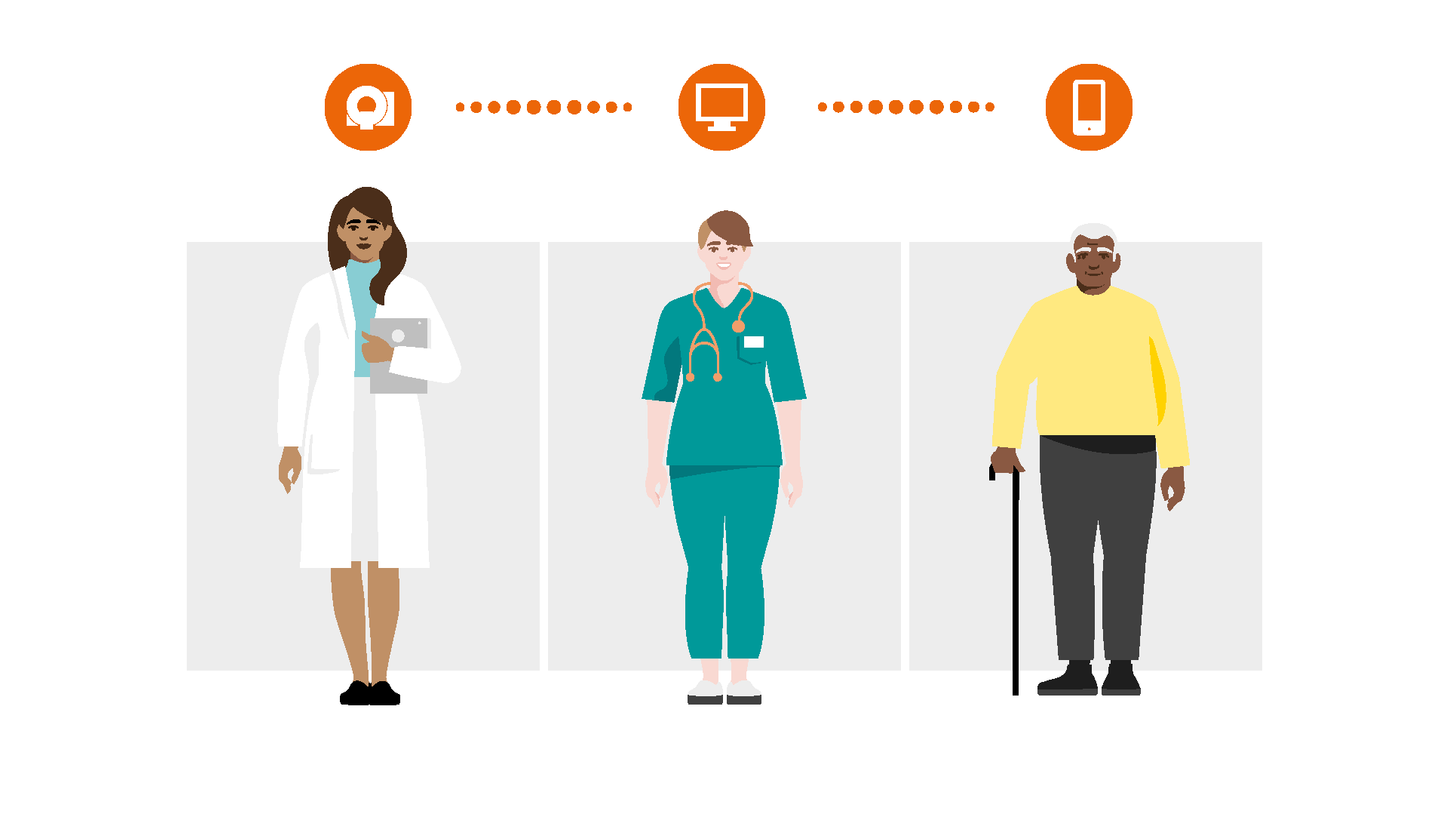

Seamless Interoperability
Build more connected healthcare systems
Unlocking the Digital Front Door with Seamless Interoperability
How healthcare can be made more accessible
The ability of health systems to engage virtually with patients, assess their needs and direct them towards treatment and care is not new, but it has been slow to gain traction. COVID-19 appears to have changed that. The pandemic has led to such profound fears about infection that many patients – even ones with serious health concerns – are staying away from emergency departments and other healthcare locations. Many of them, faced with healthcare front doors that are no longer welcoming, have begun looking elsewhere – to virtual care, or digital front doors.
Find out more about digital front doors here.
But digital front doors offer more than just better care for individual patients, and better, more flexible work experiences for providers. They also offer an opportunity for health systems to better manage overall population health, identifying and responding to trends, and establishing new care delivery models. Even more important, healthcare providers will be able to analyze and operationalize data received digitally from large patient populations.
An Example: The electronic health record in Austria
In Austria, the rollout for the nationwide Electronic Health Record (ELGA) started in 2015. As a modern and secure infrastructure, ELGA is available to all citizens and all those who receive care in the Austrian healthcare system. It facilitates access to health data for patients and authorized ELGA health service providers – attending physicians, hospitals, nursing homes or pharmacies. An important goal of ELGA is the support of medical, nursing and therapeutic treatment and care through a better flow of information, especially when several healthcare institutions or professional groups work together along a treatment chain. ELGA is working with different models of opt-out, leading to a general coverage of 97% of the insured population as enrolled ELGA users.2
The challenge
Disparate systems, processes, and standards create tremendous barriers to delivering better patient outcomes and improved patient experience.

50% of the relevant clinical information
is missing from major EHRs, resulting in a lack of comprehensive patient data3.
The main sources of healthcare data — EMRs — produce non-standardized, disparate data and interfaces.

11.2m documents exchanged
with the number rising to 457.5 million, an almost 4,000 percent increase, in 20204.
Difficulties managing large datasets and extracting this data from silos take up a lot of physicians’ time.

86% of respondents
say they have witnessed a medical error as a result of patient misidentification5.
Patient misidentification contributes to serious medical errors, thus impacting patient experience.
The Answer
Customer Stories
Browse through our customer success stories to find out more about Seamless Interoperability.
Introduction of the Swiss Post E-Health platform
Swiss Post is building national electronic patient record in Switzerland to improve quality of medical care.
Read the interview about our collaboration
Digitalization of healthcare and expanding access to care in Salzburg, Austria
Learn how the “Online Consultation” Project is driving the digitalization of Salzburger Landeskliniken (SALK) and enables access to holistic medical data from inside and outside SALK for physicians with the help of the platform strategy, so that data silos and barriers are reduced.
Join us at HIMSS 22
Join the sessions to learn about the benefits and importance of interoperability in delivering effective and engaging healthcare services - for clinicians and patients alike (on-site only).

Interoperability: Meet and talk to the expert Dr. Christian Stark
Join us at our booth to learn more about the advantages that patients and clinicians will have if they can bridge the gap between different healthcare providers by having nationwide access to healthcare information.
Booth #3359
Wednesday, March 16 at 10:30 -11:30 am EDT

Interoperability: Meet and talk to the expert Dr. Christian Stark
Join us at our booth to learn more about the advantages that patients and clinicians will have if they can bridge the gap between different healthcare providers by having nationwide access to healthcare information.
Booth #3359
Wednesday, March 16 at 1:30 - 2:30 pm EDT
The products/features (here mentioned) are not commercially available in all countries. Due to regulatory reasons their future availability cannot be guaranteed. Please contact your local Siemens Healthineers organization for further details.
eHealth Solutions consist of several products of ITH icoserve technology for healthcare GmbH – A Siemens Healthineers Company, Innsbruck, Austria. Products of eHealth Solutions are not intended for diagnostic purposes. The product offerings are not commercially available in all countries. Please contact your local Siemens Healthineers organization for further information.
Bestsennyy O, Gilbert G, Harris A, Rost J. Telehealth: A quarter-trillion-dollar post-COVID-19 reality? McKinsey & Company. 2020.
Radda C, Rümmele M. „Wir sind mit ELGA europaweit Vorreiter” [Internet]. mnews. 2019 [cited 2020 Oct 1]. Available from: medianet.at/news/health-economy/wir-sind-mit-elga-europaweit-vorreiter-26796.html









